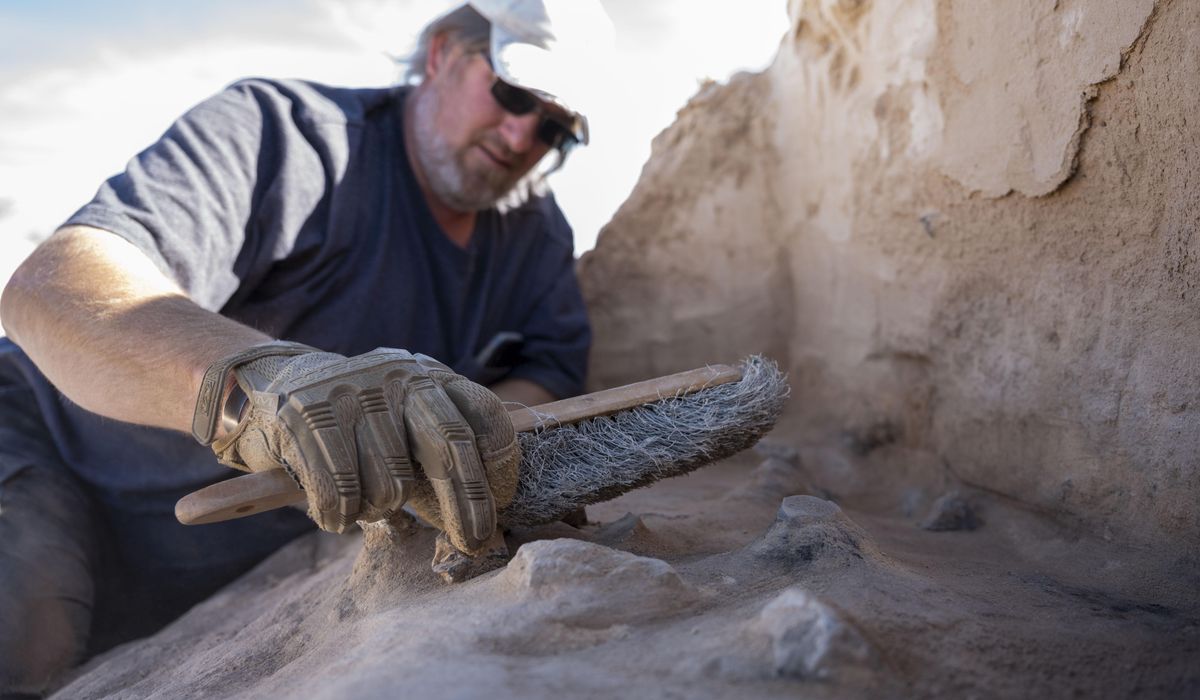


Members of the 49th Civil Engineer Squadron have unearthed an 8,200-year-old archaeological site at a road cut within the borders of Holloman Air Force Base in New Mexico.
The site had been buried by nearby white sand dunes, and contained around 70 items that let the squadron glean more insights into the state’s ancient inhabitants.
The items ranged “from flake stones to a rare example of an early ground stone, providing valuable clues about past human activities,” said Matthew Cuba, cultural resource manager for the squadron, in a Mar. 21 release from the base. “We also uncovered a series of hearths … with remnants of mesquite charcoal which is a tremendous find in and of itself.”
The site’s original users were classified as “Paleo-Archaic.” The term refers to the first stages of the transition of human communities in the area from being hunting and gathering specialists into agriculturalists that subsisted on a broader range of foods, according to the National Park Service.
“It’s significant because we have very few intact sites from this time period because … of the erosional nature of a desert environment. This is a situation in which the site retains a high degree of integrity,” Mr. Cuba told the Santa Fe New Mexican on Monday.
The squadron has named the latest archaeological site as Gomolak Overlook, which references the previous cultural resources manager, J.R. Gomolak, according to the Santa Fe New Mexican.
There are more than 400 archaeological sites within the borders of the base.
“The Department of Defense’s stewardship of vast tracts of land, including areas between White Sands National Park and Holloman, inadvertently protects numerous documented and undocumented archaeological resources,” 49th CES Environmental Chief Scott Dorton said in the release.
• Brad Matthews can be reached at bmatthews@washingtontimes.com.
